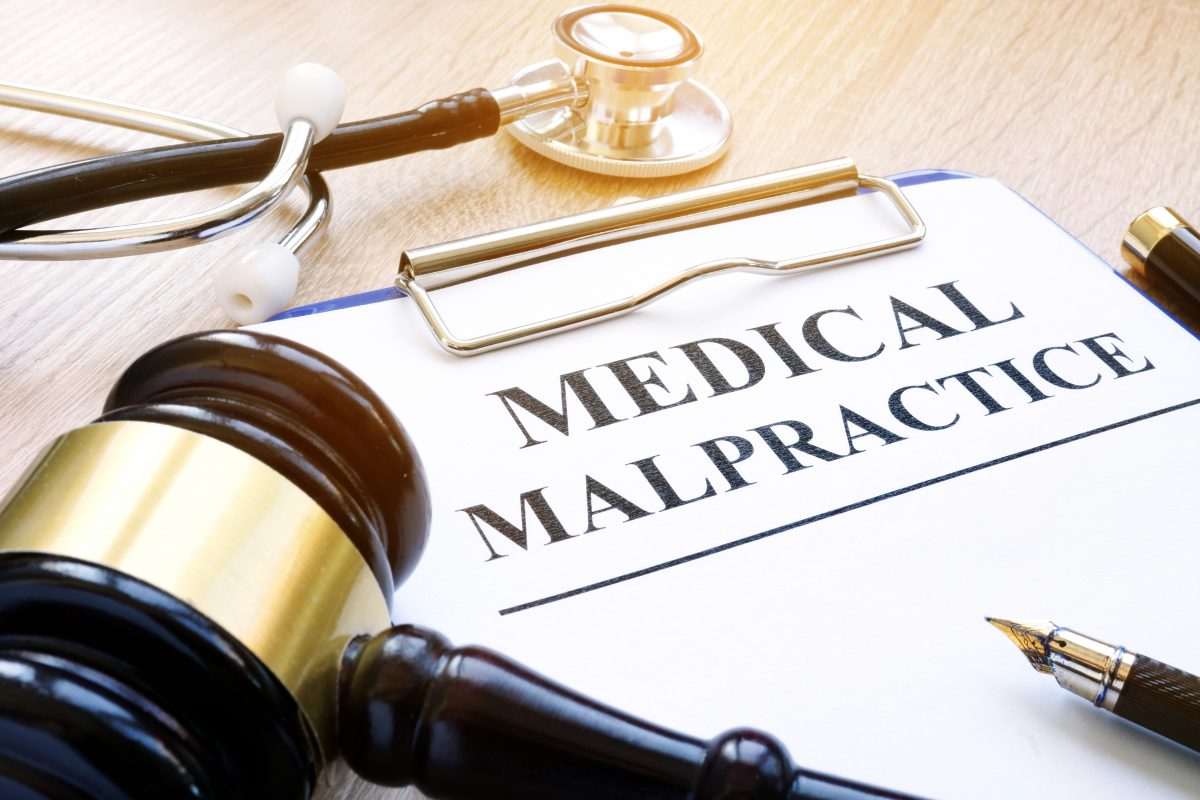An unfortunate reality in the medical field is that clinicians will always be a target of malpractice lawsuits during their careers. A study reveals that 34% of all physicians have been sued with 16.8% of those sued two or more times. The incidence of lawsuits is much greater in specific surgical subspecialties. Cardiothoracic and neurosurgeons, in particular, has an annual risk rate of about 20%.
Meanwhile, low-risk specialties such as family medicine only have 1% of annual incidence lawsuits. And yet, it’s estimated that 75% of lower-risk specialty physicians will face a malpractice claim by the age of 65.
Understanding Medical Malpractice And Its Implication
Medical malpractice happens when physicians fail to provide the best care possible. From misdiagnosis to surgical errors, it impacts a patient’s quality of life, which may even result in death.
In fact, there’s an alarming number of deaths caused by medical malpractice. A study revealed that medical malpractice has killed 251,000 patients every year in the US alone. According to statistics, medical errors are considered the 3rd leading cause of death, next to heart diseases and cancer. These result in more deaths than respiratory diseases and accidents.
How To Minimize Risk For Medical Malpractice
Lawsuits related to malpractice are usually handled by a personal injury lawyer. Deaths also fall under this category and are often handled by experienced firms like the wrongful death law firm of Ken Sigelman and others.
Physicians shouldn’t think of malpractice suits as inevitable. Here are several tips to help doctors and healthcare organizations minimize the chances of malpractice:
1. Ensure Happy And Satisfied Patients
The risk of malpractice lawsuits and patient satisfaction go hand in hand. Patients are more likely to remember how healthcare professionals made them feel than what was said or did. Glancing at the watch when consulting with a patient can make them feel rushed and unimportant. It also makes them feel like you weren’t listening to their health problems. Not spending enough time in diagnosing or treatment consulting with your patient may feel impersonal and less likely to trust you.
Without a trusting relationship with your patient, they’re less likely to reveal personal information such as sexual activity or drug use, which are needed to properly diagnose and treat them. Making your patients feel devalued or unprioritized, no matter how minor they seem, can make them litigious. However, a little courtesy, no matter how common or unnoticeable, such as making eye contact or greeting patients by their name can go a long way to minimizing dreaded lawsuits. It allows you to develop an open relationship with your patient.
So, always be prepared and personalize patient care. Take the time to review your patients’ charts before the consultation or exam. Take note of their hobbies, families, and anything else that can help you create a good relationship with them.
Plus, you should know that electronic health records often have timestamps to show when and for how long you reviewed a patient’s chart. This can become an important piece of your defense against a lawsuit.
2. Establish Good Communication
Effective communication—both written and oral—can help reduce malpractice suit as well as help defend a physician’s case if they ever get sued. Diagnosing your patient is one thing. Communicating and explaining your diagnosis to a patient in a way they’d understand is another.
There’s no such thing as being too detailed or thorough when it comes to patient communication and education. Effective communication should cover areas such as interpreting lab results, explanations for referrals, as well as contemporaneous and clean documentation of patient visits.
Also, it’s essential to provide a wide range of education materials and communication techniques to ensure that your patient understands. For instance, some might not be able to take in or understand all the information you give them during consultation. In this case, you can give them a copy or access to their health records they can review at home.
There may be a literacy or language barrier, in which you’ll need to try to explain your diagnosis like you’re talking to a child. Or if your patient is a visual learner who learns better by seeing than by reading or listening, then provide them charts and visual aids during the explanation.
3. Create A Good Work Culture
A healthcare organization’s culture plays an essential role in ensuring patient safety and satisfaction and in minimizing the risk for a malpractice suit. With that said, it’s important that each and every employee in a healthcare workplace shows good teamwork. A hospital where doctors are given every power and the people around them don’t feel empowered or feel scared to raise any concerns about a patient’s treatment creates a toxic culture that increases the risk of medical malpractice.
Consequently, when doctors, nurses, and other healthcare professionals are seen as equals and work together, it can help provide the best quality of care possible. It allows for the brainstorming of ideas and different perspectives, which helps create a much safer situation or route towards patients’ treatments.
4. Establish Strict Policies And Procedure
Other than creating a good workplace culture, healthcare organizations and physicians should also implement strong policies and procedures in their practice. Doing so can help reduce malpractice risk in two ways—first, policies and procedures help in preventing an issue or lawsuit from occurring if followed properly. Second, it reduces the likelihood of losing the case when you’re sued.
One of the most important policies you need to establish is health data privacy. Policies related to EHR use should cover ongoing and initial staff and physician training as well as rules regarding patient health data management. It should help reduce your risk of an error, keep you compliant with data regulations. And in case a lawsuit happens, this can help you demonstrate good faith.
You also need to establish policies to the scope of practice for every type of healthcare professional within your practice. It should include tasks that each individual should perform, the supervision required and the type of patients they can see.
In addition, you also need to develop policies related to care protocols such as follow-ups on patient tests, renewing or calling in new prescriptions, handing patient complaints, appointment cancellations and no-shows, ensuring privacy, and so on.
You can create ‘tip sheets’ for your staff for a quick review of the key elements of procedures and policies when needed. Always encourage healthcare professionals in your practice to review any updates or changes to procedures and policies. You can require them to sign as an acknowledgment that they’ve read and reviewed the changes.
5. Train Medical Staff
Just as doctors’ interactions with patients are important, so are medical staff members’ interactions with them. Like in any industry, poor customer service results in poor satisfaction. And in the healthcare industry, low patient satisfaction means an increased likelihood of lawsuits.
It’s essential that every patient interaction provides a good patient experience. And to do that, you need to train your medical staff to ensure stellar health services. Your medical staff should be aware of their surroundings and practice professional etiquette. For instance, your staff should limit conversations that may be inappropriate or off-putting to some patients.
You also need to provide training for difficult patient encounters. For instance, demanding or angry patients may let out their frustration on staff. A well-trained medical professional should be able to handle a difficult patient appropriately, reducing the risks of bad scenarios that may result in litigations.
Your medical staff members should also learn to observe patient emotions and reactions. This way, if the patient leaves upset, staff can inform physicians and allow for a follow-up call that could make a big difference between a ruined patient relationship and a more trustworthy one.
6. Always Document Patient Visits As They Go
The largest category of medical malpractice allegation is diagnosis-related. And when a physician is sued for misdiagnosis or missing a diagnosis, the first thing needed to create a strong argument is to recreate the circumstances. This is impossible without a detailed note.
Accurate diagnosis can be challenging because of the numerous medical problems that doctors encounter every day. However, carefully following a differential diagnosis process and immediately documenting what they’ve done can help create a strong defense against malpractice litigations.
If a doctor’s diagnosis is questioned at some point in the future, well-detailed documentation that reflects a systemic and thoughtful approach to arriving at that diagnosis can make the doctor seem reasonable instead of being negligent for misdiagnosis.
Conclusion
As a physician, the fear of malpractice litigation will always be present. However, knowing that you’re doing all you can to prevent a malpractice lawsuit from happening can help give you peace of mind.
Providing excellent patient care will always be a significant method of reducing errors that can lead to a lawsuit. However, you should also focus on other areas as well and make sure to follow the above tips. Consider the ideas mentioned here as you practice more mindfulness in your profession.



